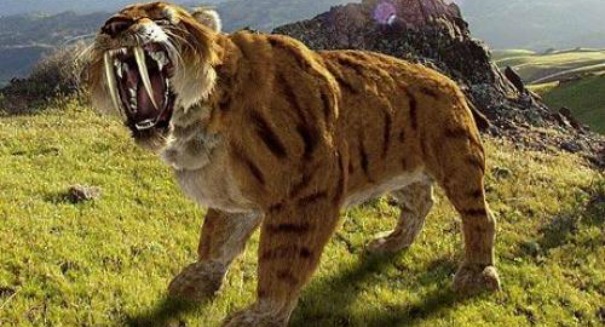
Scientists were surprised to find that these giant fangs didn't set in until 3 years of age.
The saber-toothed cat, legendary for its massive fangs during the time when mammoths roamed the Earth, had canines that grew at twice the rate of African lions today, although the cat didn’t get fully grown teeth until it was at least three years old.
The Smilodon’s dagger-like upper canine teeth was examined by scientists using X-ray imaging along with an analysis of the oxygen isotopes buried in the tooth enamel of the giant, ancient cat, according to a Reuters report.
The canines reach an astonishing 7 inches long, creating a useful weapon that would have allowed it to pierce deep into the flesh of prey or enemies. Scientists think these huge teeth were used to bite into the neck, severing arteries and veins and causing prey to die quickly.
The size of the cat itself was probably not bigger than that of a modern lion or tiger. However, it had a heavier build and a stiffer back — like a “lion on steroids,” said paleontologist Z. Jack Tseng of the American Museum of Natural History in New York, according to the report.
This most recent study examined one of the three species of sabre-toothed tigers that scientists are aware of: Smilodon fatalis. They used remains that were discovered in the La Brea Tar Pits in Los Angeles, which have held many remains of animals that passed during the Ice Age, including mammoths, bison, camels, ground sloths, and other creatures. Smilodon, which died out about 10,000 years ago, are believed to have been drawn to the Tar Pits to eat prey that was trapped in the gooey mess, and then became trapped themselves.
Smilodon first grew their baby teeth out, and then permanent ones began to grow in. The baby teeth were shed at about 1.5 years of age, before the adult sabers grew in at about three to three and a half years of age. The rate of growth was about a quarter of an inch per month.
The findings were published in the journal PLOS ONE.